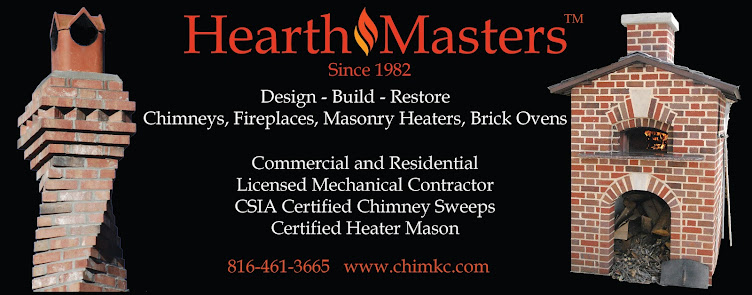By Marge Padgitt
 |
| Badly spalling bricks on a chimney |
If there are pieces of bricks or stones lying around the yard or driveway, it could be a sign that masonry repair is needed. The first place to look for damages by cold, freezing rain, and wind is the chimney since it is the area most exposed to the elements.
Signs that repairs or rebuilding is needed are missing or deteriorating mortar joints, cracked bricks or stones, or faces of masonry popped off. This is due to the penetration of water into the masonry- and when water freezes it expands, which usually results in the face of a brick or stone breaking off.
 |
| Badly spalling bricks |
Unfortunately, many chimneys are built with soft type bricks rather than hard type bricks due to the cost. Soft bricks absorb moisture more easily than hard bricks. After a few years, the soft bricks will begin to show damage, but after 30 years any type of brick or stone chimney will likely show damages of some type, if only to the mortar joints. In some cases, masons have found completely deteriorated bricks with hard mortar left behind. In other cases, the bricks are good but the mortar is severely deteriorated or missing altogether. When this occurs it is a sign that the wrong type of mortar was used. For this reason, the Midwest Chimney Safety Council recommends that chimneys should be built or reconstructed using hard bricks and the right type of mortar which will last many years longer than those built with soft masonry units.
 |
| Mortar deteriorated so badly that the chimney is falling apart |
Mortar sets up better when the work is done in the spring when temperatures are moderate so the curing process can complete without issue. If the temperature is too cold, the mortar can crack and take a long time to cure. If the temperature is too hot the water in the mortar may migrate to surrounding masonry and shrink. Professional masons can control some of this by adding an accelerant in cold weather or soaking bricks in water before using them in hot weather, but they much prefer working with masonry in ideal weather conditions.
 |
| Cement cap with drip edge |
The cement cap (crown) should be inspected in the spring to assure that it is in good condition with no cracks, deterioration, or lifting. The cap serves as a roof for the chimney and keeps the elements out of the interior chimney chase where rain can cause damage to the interior flue, smoke chamber, damper, and firebox. Any small cracks or gaps should be filled with high temp silicone, but if large cracks, severe deterioration, or missing sections of the cap exist a new cap should be constructed. As of 2012, the International Residential Code required a poured formed crown with a drip edge to better protect the chimney from damaging rainwater. The old-style crowns with a slope but without a drip edge actually contribute to the fast deterioration of masonry at the top part of the chimney, so this newer style is a big improvement.
________________________________________
Marge Padgitt is the CEO of HearthMasters, Inc. and HearthMasters Education in Kansas City, Missouri. Contact her at hearthmastersboss@gmail.com.














